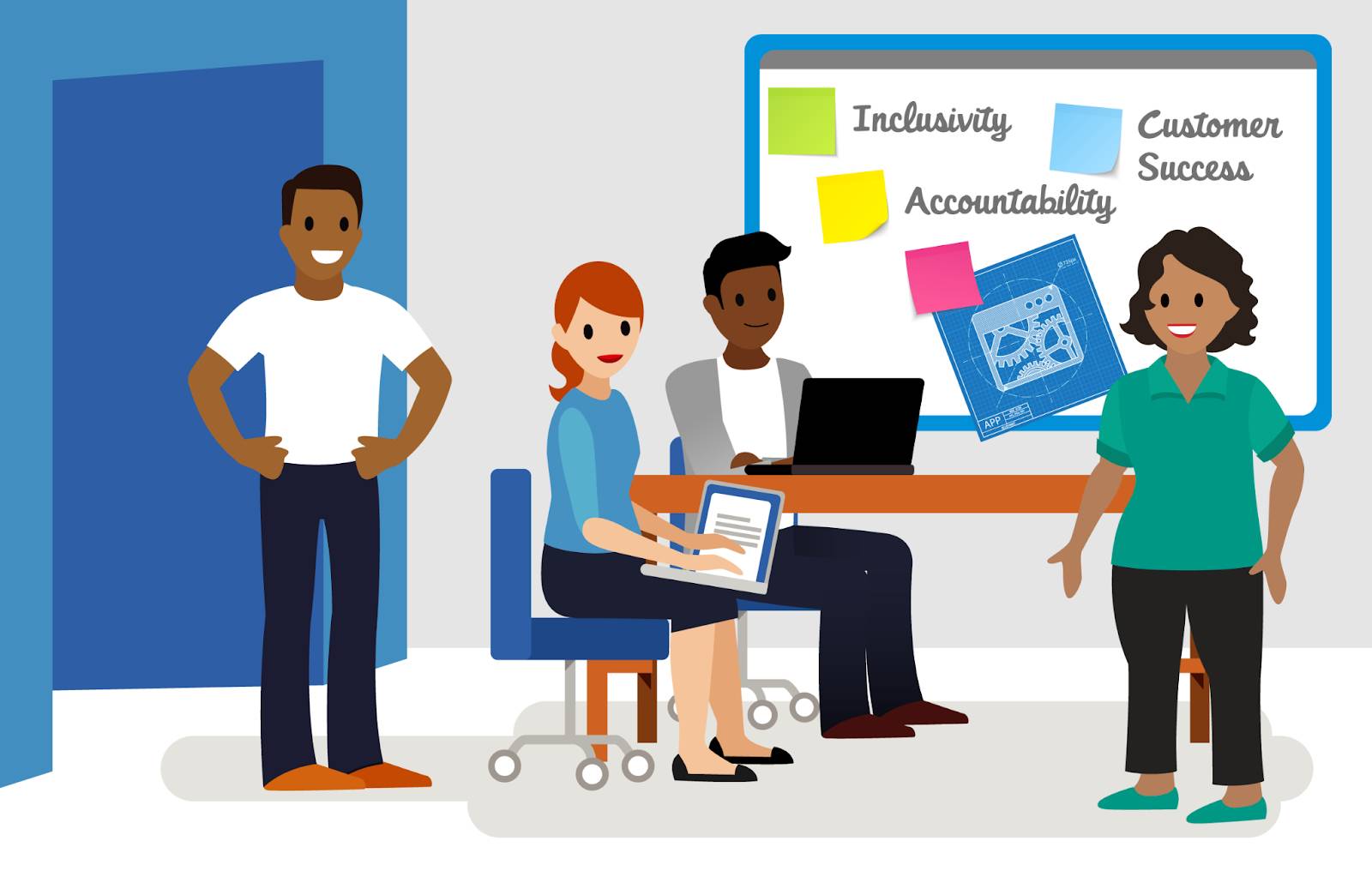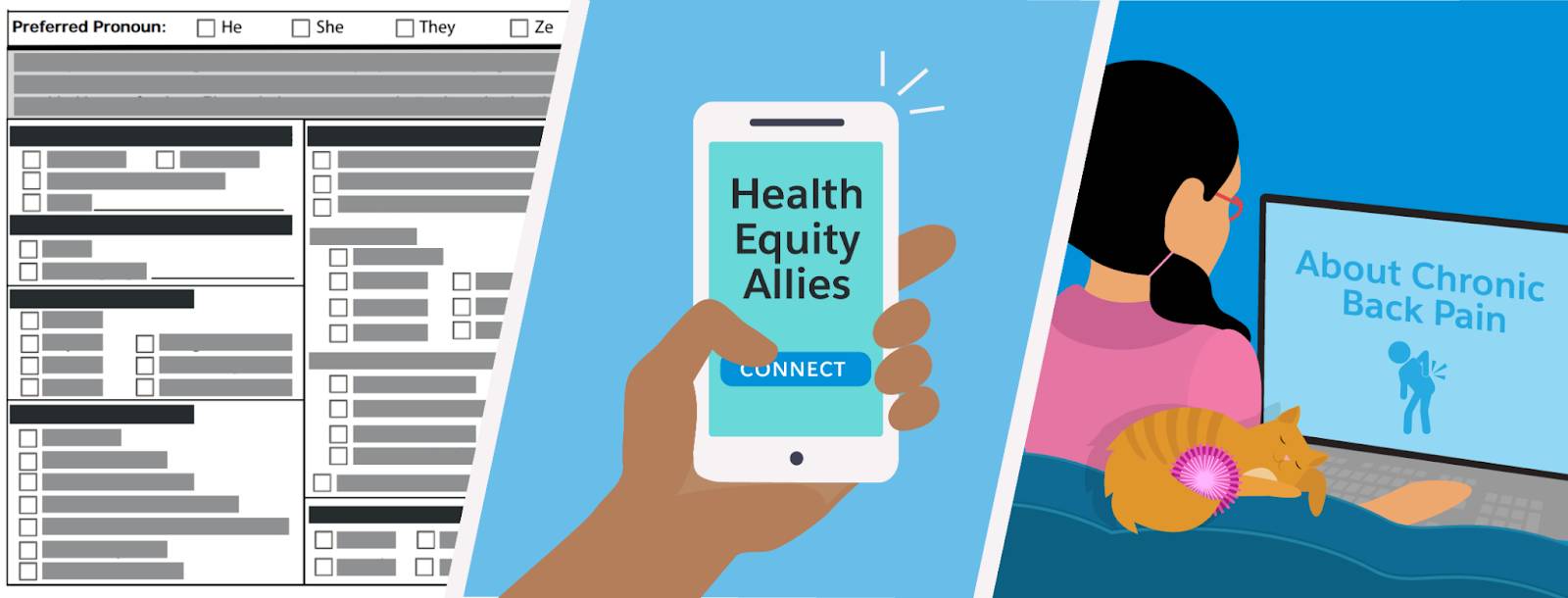Learn About Values-Driven Design
Learning Objectives
After completing this unit, you’ll be able to:
- Define values-driven design.
- Explain why values-driven design is key to relationship design.
- Identify how organizations can express values in their products and services.
The Business Impact of Values
When you think of values, you might think of key character traits or codes of conduct that individuals and organizations aspire to or embody. In the business world, corporate values statements are commonplace. Organizations often use these stated values, like equality for all and customer success, as the building blocks for their corporate culture.
Yet recent scandals—like organizations ending up in court or in the headlines for exploiting customer data or endangering consumers through negligent actions—beg a serious question. Are these values just lip service? How much do organizations actually use them to steer their business decisions and processes?
It's one thing to share values on a website or corporate document, yet customers and employees expect more, especially in eras of social unrest and appeals for change. These days, there’s a business impact for having and living up to forward-looking values. Accordingly, organizations must consistently put their values into practice, expressing them through their actions and activities to keep pace with customer expectations and stand out from competitors.
Let Values Be the Guide
One way organizations can express their values is through the practice of values-driven design. Through this practice, organizations center their design process on their core values to ensure they actively express them in their products and services.
When organizations don’t put values in the driver's seat from the start, they can often deprioritize them in favor of things like fiscal growth and short-term returns on investment. When these kinds of business goals are prioritized above human needs, it’s also an expression of values, whether intentional or not. It drives what an organization builds, measures, and rewards—and customers feel it.
Throughout this module, you learn more about values-driven design, including associated best practices for using values to inform key decisions on design and functionality for a product or service. And also explore how values-driven design creates more intentional and effective outcomes.
First, let’s explore why values-driven design is so key to relationship design. Relationship design is the practice of creating experiences that foster ongoing engagement and strengthen connections between people, organizations, and communities over time.
The Relationship Glue
In your personal life, the glue that holds many relationships together is a shared sense of values you may have with family, friends, and community groups. Yet in business communities, the glue that holds relationships together often revolves around driving key functional needs like completing projects and closing deals to bring in revenue. Teams in the workplace often have a shared sense of value around how meeting these needs advances organizational goals.
But in an era where there are numerous solutions on the market to meet consumers’ needs, organizations must find new ways to stand out from competitors. When organizations actively demonstrate their values, they set themselves apart and position themselves to create more trusting relationships with consumers.
Through values-driven design, organizations use their core values to elevate, guide, and strengthen relationships, internally, and externally between organizations, consumers, and communities. By making core values the guide for their activities and processes, organizations focus on meeting long-term functional needs over short-term gains. For example, an organization that makes choices based on short-term operational needs, such as finding cost-saving ways to manufacture its products, might risk harming a community by encroaching on indigenous people’s lands to build a plant. But if values guide this decision, the organization might avoid this harm.
Through their core values, organizations can build more authentic and transparent relationships with consumers and demonstrate their commitment to sustainable business—a win-win for all.
Next, let’s learn more about how being values-driven is integral to relationship design by looking at an example of how you can use values to build and enhance relationships.
App for All
The product design team at Bloomington Caregivers—a home healthcare agency in Bloomington, MN—is gearing up to design a new mobile app they plan to launch later in the year. Bloomington Caregivers provides full-spectrum care for the elderly, serving approximately 3,000 clients throughout the Minneapolis–St. Paul region. Recently, the agency decided to expand into a new market: family medicine. Bloomington Caregivers has a few pilot practices set up across the greater Minneapolis region and wants to extend its ability to deliver outstanding patient experiences to its outpatient care. With this goal in mind, the agency’s product design team is designing a new mobile app that helps patients experience more efficient and accessible check-in and after-care services.
During its analysis of other companies in the field, Bloomington Caregivers learned that a competitor’s app came under fire because their check-in form lacked certain options that seemed to exclude larger portions of the local community. To proactively rise above this kind of scrutiny and honor its core values—equality for all, customer success, and accountability—the Bloomington Caregivers team intentionally integrates these values into the design and build process from the start.

To build in accountability, the team set up an advisory council to advise on how Bloomington Caregivers’ app can be more welcoming to everyone. The council includes healthcare workers, organization employees and executives, potential customers, and community members from patient advocacy groups who help ensure that Bloomington Caregivers remains accountable to its commitment to equality for all throughout the design process.
In addition, Bloomington Caregivers wants to enhance customer success by making sure its app is accessible for customers who don’t have consistent access to mobile devices. To honor this commitment, the team decides to add additional scope to the project—the design and setup of kiosks at their pilot locations to create equal access for everyone.
As a result of this community-driven design process, Bloomington Caregivers was able to broaden app capabilities. The agency invested in features that council members’ lived experiences and expertise illuminated as a more welcoming experience for everyone, including giving patients options to:
- Choose from a broader list of demographic options
- Connect with community support and patient advocacy groups based on responses from their intake and outtake forms.
- Engage family members and loved ones in their care by choosing to share educational videos about their treatment plans or doctor visits from the hospital’s patient library.

Additionally, this community-led process helped strengthen relationships between Bloomington Caregivers, its customers, and the wider community. For example, council members felt heard and respected by the Bloomington Caregivers design team when they saw how much they incorporated their guidance into the product design. Also, customers from marginalized groups now felt more seen. And some became brand advocates, sharing their positive experiences with the brand with others in their community.
When organizations let their core values drive their decisions and processes, they show customers and the larger community that they mean what they say. They also build more trust, connection, and more-effective products and services to supercharge success.
Now that you’ve learned about values-driven design and why it’s key to relationship design, let’s check out associated best practices next.
Resources
